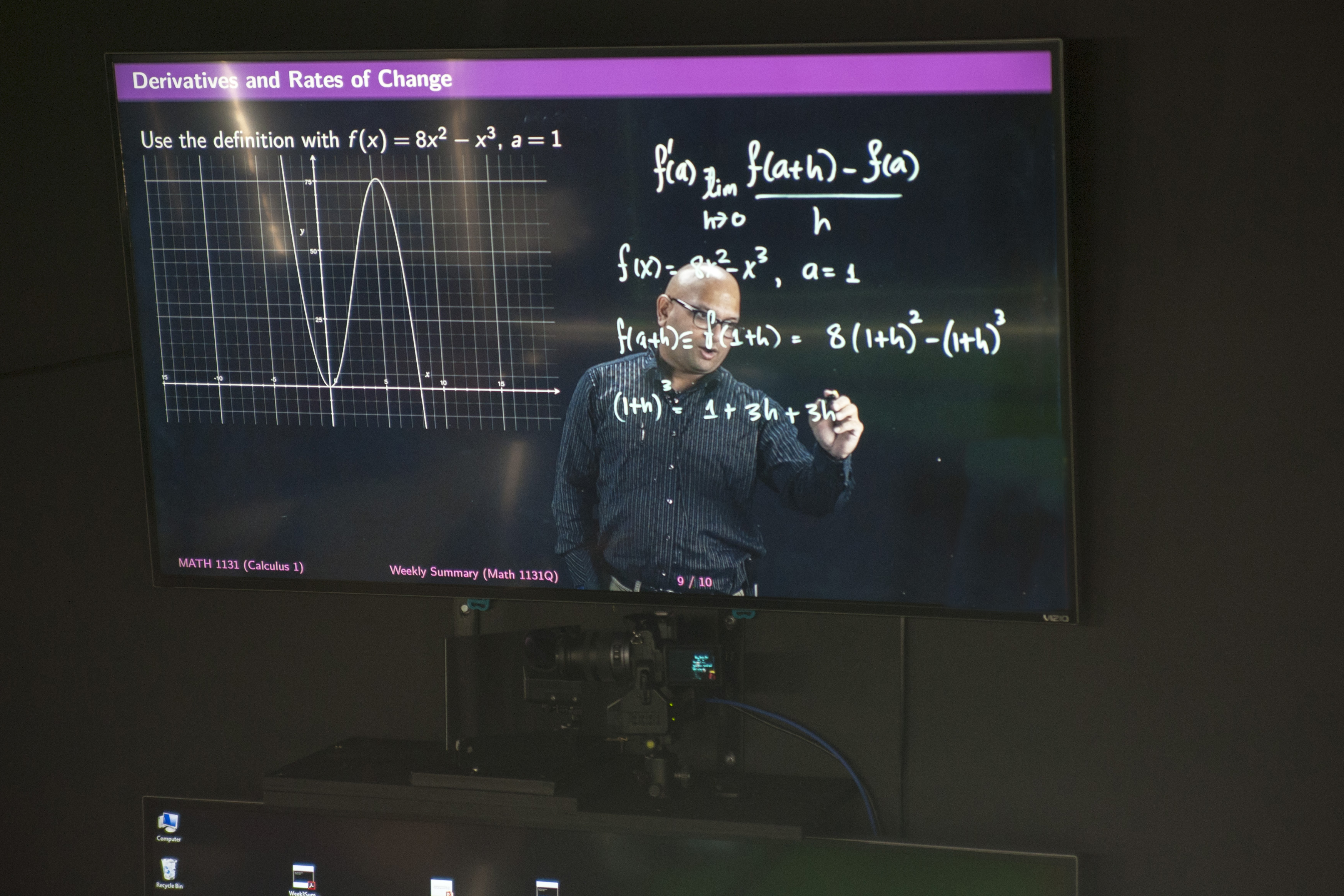Many people leave college with bad memories of struggling through math classes. Students’ difficulties with early math classes are one of the top reasons they drop out of STEM majors.
UConn Technology Incubation Program startup Stemify is working to change that, with an innovative approach to math education that utilizes artificial intelligence to support learning.
In 2013, Amit Savkar, UConn associate professor in residence of mathematics, began looking into the reasons why so many students were dropping out of or failing math classes early in their college career.
Savkar realized the placement exams students took for those courses did not account for the individual differences in knowledge gaps. In response, he developed a platform that would analyze the response of students’ incorrect answers to questions and provide students with adaptive instruction through targeted videos in the areas the program identified as knowledge gaps.
The platform has since expanded dramatically through the use of machine learning into a full-fledged company helping students across the country.
In 2018, Connecticut-based entrepreneur Bill Moschella, who serves on the TIP Advisory Board, joined Stemify as an investor and executive chairman.
“I saw what he (Savkar) was doing and the opportunity and the impact it could make for the greater good of humanity,” Moschella says. “I saw this altruistic picture and I was really excited about it.”
Moschella has started five companies in the state and now runs Masheen, an investment company that provides startups with much-needed funding and guidance.
“The connections UConn researchers make with experienced entrepreneurs and investors is one of TIP’s many benefits,” says Abhijit Banerjee, associate vice president for innovation and entrepreneurship at UConn. “The right team with science and business expertise can transform a good idea into a successful company.”
The Right Tool for the Job
Stemify’s software has been shown to be highly discipline-agnostic, and its prototype has been adapted to support learning in math-centric classes in physics and engineering disciplines.
The tool is highly customizable, allowing instructors to input their unique course information.
“I wasn’t prescriptive about how our system has to be used,” Savkar says. “We’re just providing the tools.”
When students are completing assignments, Stemify’s unique AI technology kicks in to identify micro-level knowledge gaps. The technology directs students to videos and resources providing specific, real-time feedback, much in the same way a professor or teaching assistant would immediately provide support to a student while they solve a problem in class.
“Fundamentally, what this system is doing is the job of office hours with individualized attention to the student’s needs,” Savkar says.
Stemify’s technology can also be used at the department level to improve course design. At UConn, Savkar used his technology to identify why students were struggling in calculus classes. By looking at data from all summative exams (midterms through final exams), he identified key areas requiring more attention, and helped the department rethink how they approached them. This resulted in reducing rates of dropout, withdrawal, or failure in Calculus I and II from 35-40% to 10-20%.
“It’s not about us, it’s about how well it’s being received by students,” Savkar says.
One of the biggest advantages of Stemify’s products over competitors is the strength and user-friendliness of their platform. Many other educational software options are developed by traditional academic publishers, who create outmoded platforms that are difficult to navigate and do not rise to the challenge of meaningfully supportive student learning.
“The stability of the platform, the robustness of the platform, the integrity of the platform became a big deal, and that’s been an engineering feat,” Savkar says.
The COVID-19 pandemic, which has forced many students into online learning, has highlighted the need for better educational technology and caused the market to expand rapidly.
“You’re forced to change,” Moschella says. “You will fail if you don’t change.”
By working directly with educational institutions, Stemify developed a product that was exactly what schools and instructors were looking for. Stemify’s platform also takes advantage of open-source educational resources helping make education more affordable.
“We’re trying to build exactly what the market needs and not that we think they want, which is a paradigm shift,” Moschella says.
Currently, Stemify’s technology is being implemented at colleges in Connecticut, Kansas, and California. They are looking to expand into secondary education and more college-level institutions.
The Stemify team also has global aspirations, and have already had interest from institutions in the United Kingdom, Israel, and Africa.
“STEM transcends all language,” Moschella says. “Mathematics is the global language.”
UConn Startup Story
In addition to being founded by a UConn researcher to specifically help UConn students, Stemify’s story has many other UConn connections. Savkar and the Stemify team have taken advantage of several UConn entrepreneurship programs to help their startup progress. They received seed funding from the Angel Investment Forum of Connecticut, Connecticut Innovations, and the UConn Innovation Fund.
Stemify was part of the Connecticut Center for Entrepreneurship and Innovation summer fellowship in 2018 and Accelerate UConn the same year.
These educational programs and monetary awards gave Savkar the critical early support startups need to advance from an idea to a viable product.
Savkar credits these programs, as well as the business expertise Moschella brings to the team, with Stemify’s success.
“Starting a company is by no means a joke,” Savkar says. “There are so many things involved in building a company. Thanks to the clear need for this technology and the support we’ve received to help make it happen, I think Stemify’s future is limitless.”



